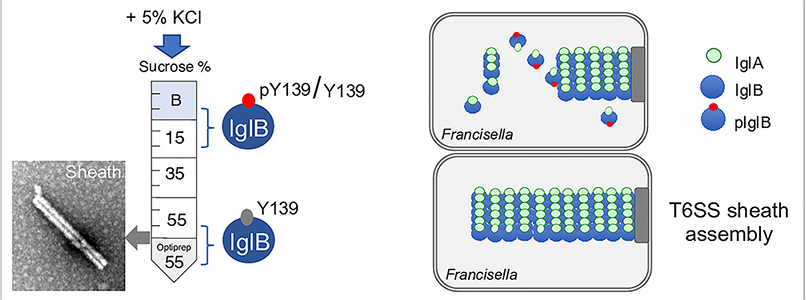Critical Role of a Sheath Phosphorylation Site On the Assembly and Function of an Atypical Type VI Secretion System. Ziveri et al, Mol Cell Proteomics, 2019 Dec;18(12):2418-2432
News linked to Alain Charbit

The bacterial pathogen Francisella tularensis possesses a noncanonical type VI secretion system (T6SS) that is required for phagosomal escape in infected macrophages. KCl stimulation has been previously used to trigger assembly and secretion of the T6SS in culture. By differential proteomics, we found here that the amounts of the T6SS proteins remained unchanged upon KCl stimulation, suggesting involvement of post-translational modifications in T6SS assembly. A phosphoproteomic analysis indeed identified a unique phosphorylation site on IglB, a key component of the T6SS sheath. Substitutions of Y139 with alanine or phosphomimetics prevented T6SS formation and abolished phagosomal escape whereas substitution with phenylalanine delayed but did not abolish phagosomal escape in J774-1 macrophages. Altogether our data demonstrated that the Y139 site of IglB plays a critical role in T6SS biogenesis, suggesting that sheath phosphorylation could participate to T6SS dynamics.Data are available via ProteomeXchange with identifier PXD013619; and on MS-Viewer, key lkaqkllxwx
